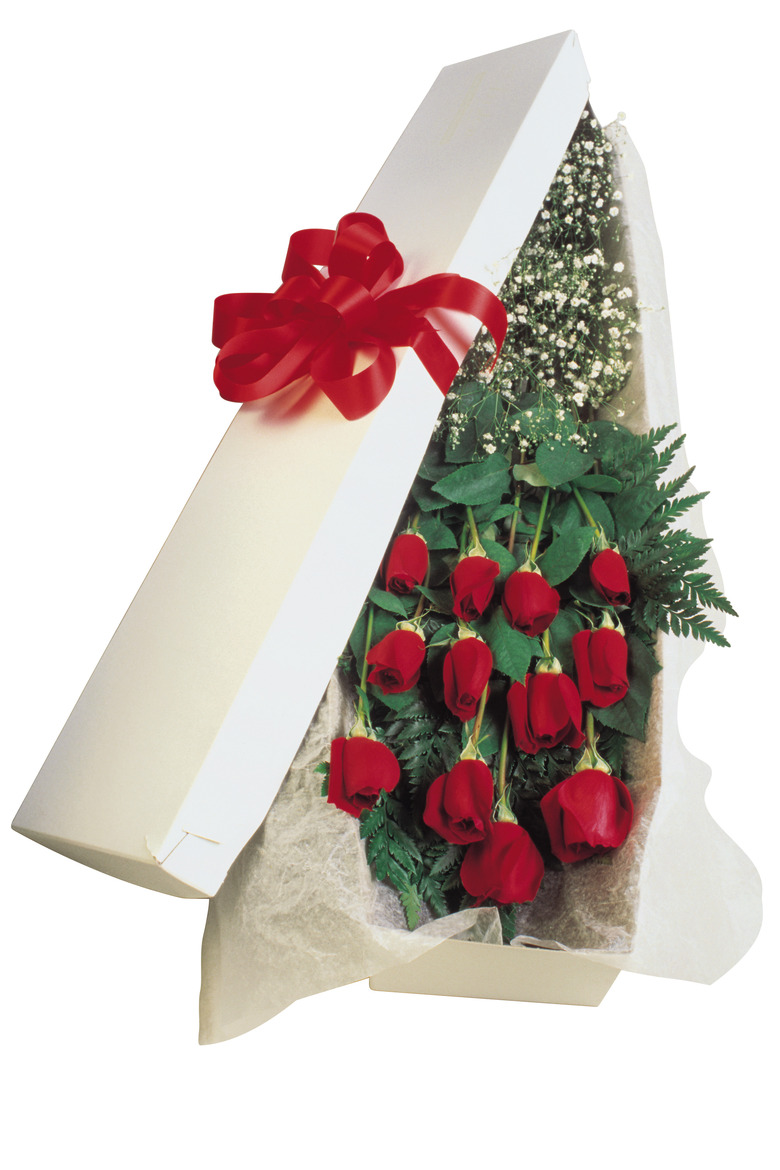Long-Stem Rose Vs. Short-Stem
We may receive a commission on purchases made from links.
Fragrant and beautiful, roses (Rosa spp.) have been cultivated for over 5,000 years. A favorite of romantics and home gardeners alike, these showy flowers come in a wide variety of colors, shapes and sizes, including stem length. Commercial growers and florists often classify roses as short- or long-stem, as each type is desirable for different reasons.
Step 1
Roses can be grown anywhere in the United States, according to the American Rose Society, but some species and cultivars do much better in some areas than others. In general, most roses grow best in U.S. Department of Agriculture plant hardiness zones 4 through 8. Again, however, some can tolerate colder weather, and a few can tolerate the hotter temperatures in USDA zones 9 and 10. Like the climate, care of roses does vary slightly depending on the species and cultivar. Most, however, grow best in full sunlight and in rich, well-draining soil.
Long-stem
Step 1
Long-stem roses are variations of hybrid tea roses, which outsell all other rose types combined, according to the University of California Cooperative Extension. Because the roses bloom on tall, sturdy stems, they are most often used in floral arrangements. These are the most common types of roses used by florists and sold as cut flowers. They are popularly given as gifts.
Step 2
- Roses can be grown anywhere in the United States, according to the American Rose Society, but some species and cultivars do much better in some areas than others.
Short-stem
Step 1
Short-stem roses are typically more fragrant than their longer-stemmed cousins and have fewer thorns, but they don't work as well as cut flowers. Their stems are often too short to present well in a vase, although they are sometimes used in mixed floral arrangements. The blooms also tend to be smaller than those of long-stem roses. Short-stem roses are usually varieties of shrub roses
Selected Cultivars
Step 1
Rosa "Mister Lincoln" is one of the most prized of the long-stem roses. This rich, red rose has huge, deeply fragrant flowers and grows in USDA zones 5 through 9. The shrub reaches a maximum height and width of 5 and 4 feet respectively, and will bloom from May until the first frost of autumn if cared for properly. Rosa "Radrazz" Knock Out is a shrub rose notable for its ability to bloom in low-sunlight conditions. If you want a short-stem rose that can bloom in as little as three hours of sunlight per day, this one is an excellent choice. Hardy in USDA zones 5 through 9, it grows to a maximum height and width of 4 feet.
Step 2
- Short-stem roses are typically more fragrant than their longer-stemmed cousins and have fewer thorns, but they don't work as well as cut flowers.
- Their stems are often too short to present well in a vase, although they are sometimes used in mixed floral arrangements.
References
- University of Illinois Extension: The History of Roses
- American Rose Society: Climate Zones — Tools For Good Gardening
- Rose Magazine: Bare Root Roses Page 1
- Rose Magazine: Bare Root Roses Page 2
- University of Illinois Extension: Site Selection & Bed Preparation
- University of California Cooperative Extension: Types of Modern Roses
- Proflowers: A Guide to Long Stemmed Roses
- Teleflora Blog: What's the Difference Between Short and Long-Stemmed Roses?
- Missouri Botanical Garden: Rosa "Mister Lincoln"
- Missouri Botanical Garden: Rosa "Radrazz" Knock Out
